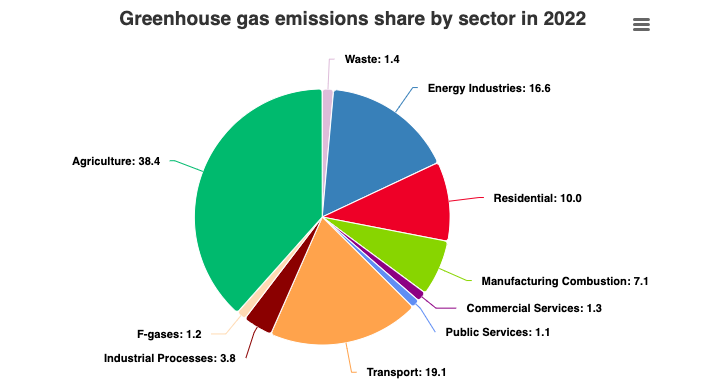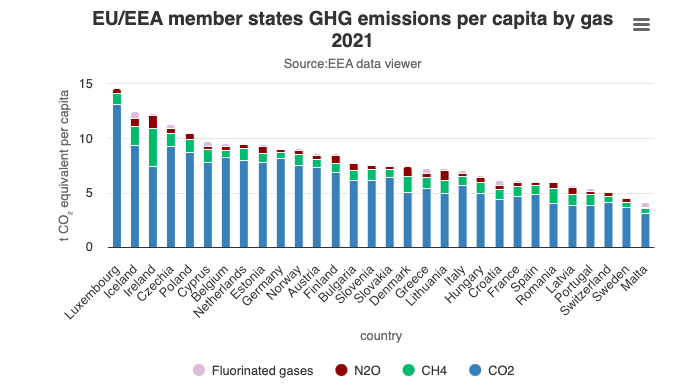The Irish agriculture sector is the biggest contributor to greenhouse gases in the country according to recently released figures
Ireland’s farmers are being pressed to reduce their greenhouse gas emissions after figures from the Environmental Protection Agency (EPA) have shown that the agriculture sector is the biggest contributor in Ireland to climate change.
The farming sector is responsible for pumping 38.4 per cent of Ireland’s greenhouse gases into the atmosphere. This compares to 19.4 per cent from the next biggest polluting sector transport — emissions from Ireland’s transport sector (road traffic and air traffic) rose by 6 per cent last year.

The energy industries art the third biggest contributors to gas emissions at16.6 per cent (see above graph)
Within the agriculture sector, cattle farming is the biggest contributor to greenhouse gases, and the government is looking for farmers to cull a minimum of 200,000 animals. Cattle emit gases during their bodily functions — this gas is responsible for up to a quarter of all greenhouse gases. A statement from the EPA said: “Climate change is challenging for Irish agriculture both in the context of greenhouse gas emissions and the need for adaptation of farming practices to be more resilient to the impacts of climate change. In Ireland the agriculture sector was directly responsible for 38.4 per cent of national greenhouse gases (GHGs) emissions in 2022, mainly methane from livestock, and nitrous oxide due to the use of nitrogen fertiliser and manure management.”

Ireland has the highest agriculture emission contribution towards national total emissions from any of the EU member states. (see above histogram).
Some reductions in emissions have taken place, but fall far short of the targets required to get anywhere net zero. The government has set a target of 51 per cent by the end of the decade, en route to its goal of net zero by 2050. At the current rate of reduction of less than 2 per cent a year, that figure of 51 per cent is wildly optimistic.
Thus the proposals from the Irish government to begin a cull are seen as practicable and likely to put a large dent in emissions. Herd numbers (both dairy and beef) have increased significantly in the last decade, so reduction in that — it is argued — would make a large difference to Ireland’s fight against climate change. And added benefit, has been argued, is that a change from a meat-based diet to a more plant-based diet would improve the health of the the population.
There has, naturally, been pushback from farmers and rural TDs who feel farmers are being targeted unfairly
* NOTE The data above is courtesy of the Environmental Protection Agency. The figures and graphs present provisional 1990-2022 inventory data (updated July 2023) and the EPA's latest 2022-2030 projections estimates (updated June 2023)

